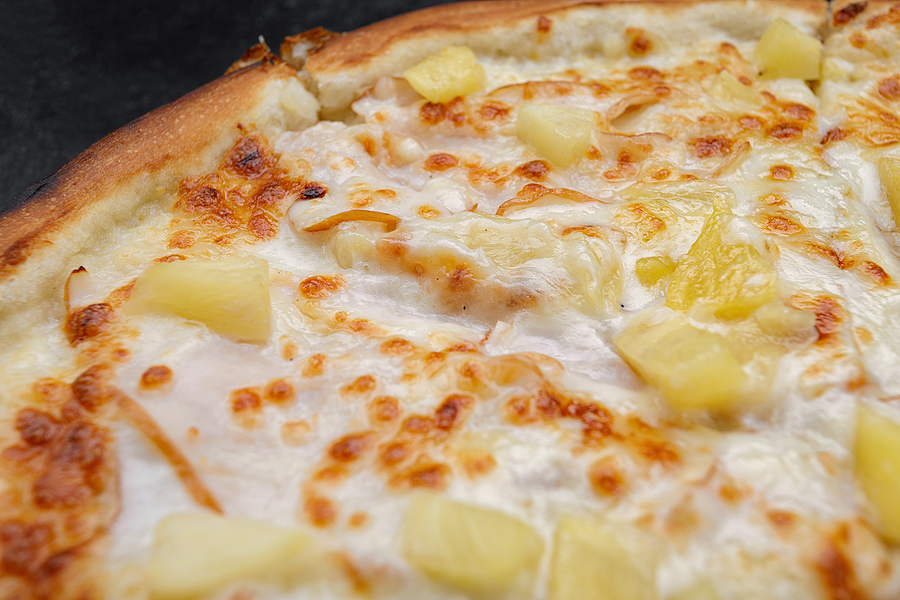The easiest way to make all of Italy groan in horror and disgust is to post a picture of pizza with pineapple on it and hashtag it #Foodgasm. It’s that simple. You will immediately be inundated with hate mail. If you’re (un)lucky, the mafia might give you a call, too. The complaint is laconic and direct. “That is not pizza. Pizza does not have pineapple on it.”
I’ve had enough of that asinine argument.
Who gets to decide? And how do we define what is authentic? Full disclosure, I was a food traditionalist. I had certain views on how food should be served and eaten. As an Indian, I remember being wounded at the idea of Butter Chicken being served with rice here in Canada. There is not a single place in India where you will be offered rice with butter chicken, and India is very proud of its food culture and how it should remain authentic. How things should be served, eaten and should taste.
But then I started seeing the flaws in that argument. Butter chicken came to India due to the Mughals who migrated from Central Asia. Tomatoes and chillies – essential ingredients to make the “perfect” butter chicken – were introduced to India by the Portuguese in the 16th century. Even potatoes weren’t endemic to India and were introduced via the same route. And yet, all these make up the bulk of what we consider Indian.
If there is no true regional originality of ingredients, it is hubris to ignore the global contribution and collaboration to local food. I wish food traditionalists truly recognized that.
To be clear, I recognize that foods are only made in a certain way in certain places. You will be hard-pressed to find a pizza in Italy with pineapple toppings on it. In Naples they make it a specific way, using specific ingredients and specialized ovens. I’ve spent time in Italy and I can tell you they don’t make it like that anywhere else. Period. And the Neapolitan pie is my favourite version of pizza. If you haven’t tried one, I strongly recommend Anthony’s on Wellington St.
A lot of our blind defence of food traditions could be an involuntary byproduct of evolution. Back when we were still hunter-gatherers, food was purely a means of sustenance. But with the discovery of fire and the evolution of settler communities, it also became an object of pleasure. This change happened over a relatively short time period and our brains, tongues and noses did not evolve perfectly enough to reflect food’s new position in our lives. Instead, the brain decided the centres that deal with memory and nostalgia would deal with flavour, too.
Thus, our unwavering attachment to not wanting things to change from how we remember them and how they make us feel. It stops us being objective about the subjectivity of taste.
But to claim that is the only way to cook/eat something and everything else is wrong? It’s limiting. Sure, there is pride attached to food traditions, but when you swallow that pride – pun intended – you realize food is, above all, about great taste.
And taste doesn’t care about tradition.
I’ve had butter chicken with rice multiple times since I came here, and I love it. It’s convenient, and it tastes great. I’ve not liked everything, though. I was served a chicken tikka wrap stuffed with lettuce and tomatoes – blasphemy back home – and I hated it. But I hated it for how it tasted, not because of the offence of “inauthenticity.”
My favourite example of food traditions being ignored to create something delicious is the Chicago deep dish pizza. The crust is thick, the cheese is below the marinara sauce and cooked in a cast iron skillet. Everything a traditional Neapolitan pizza isn’t. At the same time, it was invented by Italian immigrants Sewell and Ric Riccado in 1943. It is rich and decadent like all things American, and full of flavour and aroma, like all things Italian.
That is the point.
Every cuisine has made huge contributions to gastronomy, and the more we start playing with them, the better they get. The Chicago deep dish is a success story. Now imagine if we added Sriracha to pasta. Or served a roast turkey with some pesto on the side. Added some Tobasco to sushi. Made a butter chicken taco.
Wouldn’t that be fascinating?
Just remember that you don’t have to love a single one of those combinations.
But can we please stop with the food traditionalist mindset and just enjoy our food for how it tastes?



